|
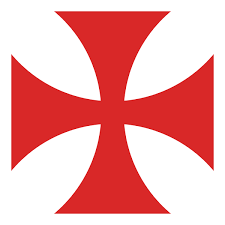
Our Templar Knight Ancestors
PRINT Version
of this article
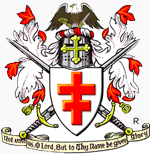
Sovereign Military Order of the Temple of Jerusalem
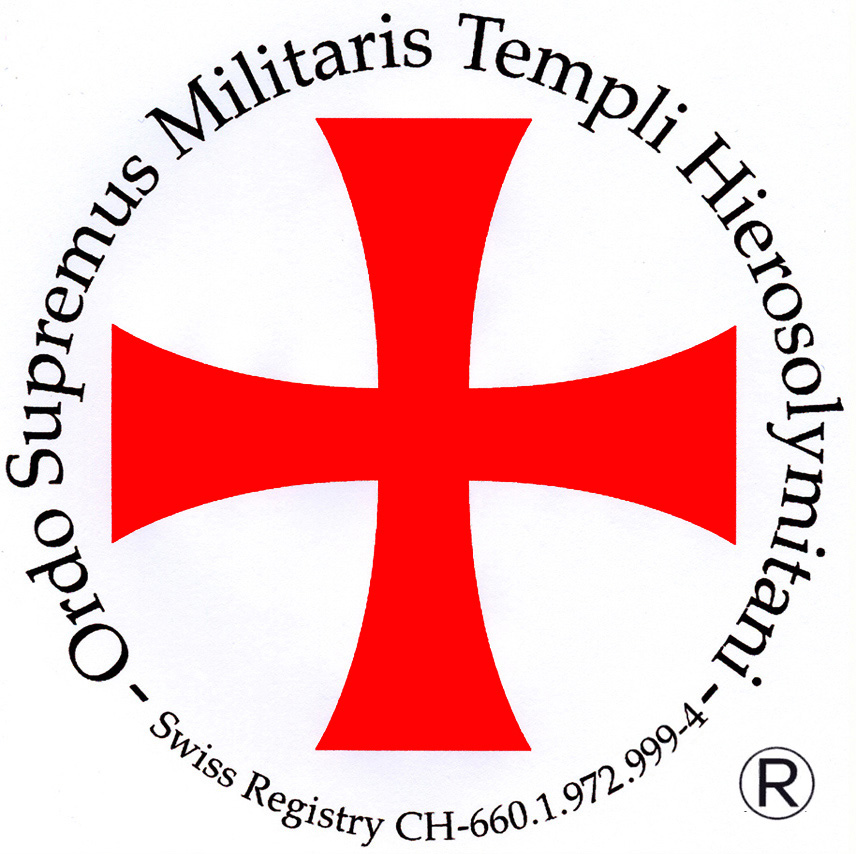
Order
Supremus Militaris Hierosolymitani
Back to


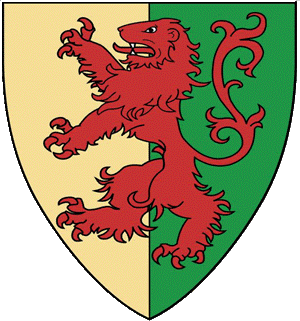
Lineage from
Earl William Marshal
Isabel de Clare
Earl William de Warren
Maud Marshal
Earl John de Warren
Alice le Brun
Baron Henry Percy
Alianore Plantagenet
de Warren
Baron Henry de Percy
Eleanor de Arundel
Baron Henry de Percy
Idoine de Clifford
Lord Henry de Percy
Mary Plantagenet
Henry Percy
Margaret de Neville
Sir Henry "Hotspur" Percy
Elizabeth Mortimer
Earl Henry Percy
Eleanor de Neville
Sir Henry Percy
Eleanor Poynings
Sir William Gascoigne
Margaret Percy
Sir George Talboys
Elizabeth Gascoigne
Sir Edward Dymoke
Anne Talboys
Sir Thomas Windebank
Frances Dymoke
Lt. Col. Robert Reade
Mildred Windebank
Lt. Col. George Reade
Elizabeth Martiau
Col. Augustine Warner II
Mildred Reade
Col. John Lewis II
Elizabeth Warner
Col. Robert Lewis
Jane Meriwether
Col. Nicholas Lewis
Mary (Capt. Molly) Walker
Lt. Hudson Martin
Jane Walker Lewis
Thurston Dickinson
Mary Walker Martin
John D. Duggins
Frances Elizabeth Dickinson
James Henry Smith
Elizabeth Marshall Duggins
Peter Christen Jensen
Laura Ann Smith
Wilhelm August Heineman
Lucile Marguerite Jensen
Peter Edward Heineman
Doris Jean Crum
Dr. Peter Lea Heineman
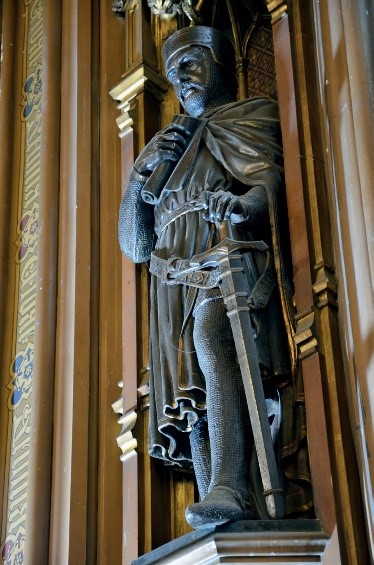
Statue of Earl William Marshall behind the Royal Throne in the
House of Lords, holding a copy of Magna Carta
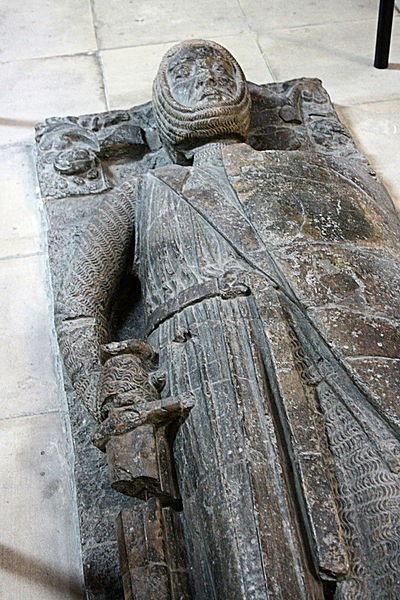
Effigy of Earl William Marshall in Temple Church
Lineage from
Sir Hugh de Morwick, III
Agnes de Heyford
Sir John de Bulmer, III
Theophania de Morwick
Sir John Constable
Albreda de Bulmer
Sir John Constable
Maud de Hilton
Sir William Constable
Elizabeth Metham
Sir John Constable
Margaret Umfreville
Sir John Constable
Lora FitzHugh
Sir William Mallory
Joan Constable
Sir John Mallory
Margaret Thwaites
Sir William Mallory
Johanna "Jane" Norton
Sir William Mallory
Joan Constable
Rev. Thomas Mallory
Elizabeth Vaughn
Rev. Thomas Mallory
Unknown
Capt. Roger Mallory
Unknown
Thomas Mallory
Elizabeth Higgason
John Mallory, Sr.
Anne Coyne
John Mallory, Jr.
Grace Smith
Henry Mallory
Lucy (Chandler) Long
Tartan Smith
Lucy Mallory
James Henry Smith
Elizabeth Marshall Duggins
Peter Christen Jensen
Laura Ann Smith
Wilhelm August Heineman
Lucile Marguerite Jensen
Peter Edward Heineman
Doris Jean Crum
Dr. Peter Lea Heineman
Lineage
from
Dr. Thomas Walker
Dr. Thomas
Walker
m. Mildred Meriwether
Mary Walker
m. Col. Nicholas Lewis
Jane Walker
Lewis
m. Hudson Martin
Mary Walker
Martin
m. Thurston Dickinson
Frances Elizabeth Dickinson
m. John Duggins
Elizabeth Marshall Duggins
m. James Henry Smith
Laura Ann Smith
m. Peter Christian Jensen
Lucile Marguerite Jensen
m. Wilhelm A. Heineman
Peter E. Heineman
m. Doris
J. Crum
Peter L.
Heineman
Lineage
from
Lt. Hudson Martin
Lt. Hudson
Martin
m. Jane Walker Lewis
Mary Walker
Martin
m. Thurston Dickinson
Frances Elizabeth Dickinson
m. John Duggins
Elizabeth Marshall Duggins
m. James Henry Smith
Laura Ann Smith
m. Peter Christian Jensen
Lucile Marguerite Jensen
m. Wilhelm A. Heineman
Peter E. Heineman
m. Doris
J. Crum
Peter L.
Heineman
Lineage
from
Pvt. William T. Duggins
William T. Duggins
m. Elizabeth Perkins
John Duggins
m. Frances E. Dickinson
Elizabeth Marshall Duggins
m. James Henry Smith
Laura Ann Smith
m. Peter Christian Jensen
Lucile Marguerite Jensen
m. Wilhelm A. Heineman
Peter E. Heineman
m. Doris
J. Crum
Peter L.
Heineman |
INTRODUCTION
Since the early 8th century Christian Europe
had been under attack from Islamic forces. By the 10th century
most of the Iberian Peninsula, Sicily and southern Italy had
fallen under Muslim control. Rome itself was besieged by a
Saracen force. With Constantinople under threat, the Byzantine
Emperor appealed to the Pope for aid. Urban II seized the
opportunity and called for the First Crusade in 1095, directing
it against the Turks. The goal was to save the Byzantine Empire
and to recover the Holy Land.
By the end of July 1099, the First Crusade
had achieved its final objective: the capture of Jerusalem. The
Holy Land quickly fragmented into feudal states, with the King
of Jerusalem possessing only a vague suzerainty. An immediate
problem was the lack of a reliable fighting force to defend
against Islamic reaction; most of the crusaders had returned
home. The Knights Templar would provide a solution by becoming
a standing army dedicated to the defense of Christian interests
in the Holy Land.
A more immediate threat was to the large
number of pilgrims and travelers arriving from Europe. Roving
Bandits and Saracens attacked them as they traveled from the
port of Jaffa to Jerusalem, and on to the Jordan River where
Christ was baptized.
Two knights—Hugues de Payens and Geoffrey de
Saint-Omer—saw the need. They recruited fellow knights and
offered their service to protect pilgrims and travelers.
Impressed with their zeal, King Baldwin II offered them part of
his residence, the al-Aqsa Mosque on Temple Mount, the site of
Solomon’s Temple.
These first Templars, living on Temple Mount
and fulfilling their religious duties at the Temple of Christ,
called themselves “The Poor Knights of Christ and of the Temple
of Solomon”.
In 1127 with the approval from the King of
Jerusalem, Hugues de Payens with several of his brothers toured
Western Europe to recruit members. Bernard, the influential
Cistercian Abbot of Clairvaux, recognized in them the potential
for a permanent force to defend the Holy Land. In 1129 at the
Council of Troyes, the Order of the Temple was recognized and
provided with a Rule, "Specific Behavior for the Templar Order”
– or Latin Rule—based on the Benedictine/Cistercian model.
The Templars adopted the white mantle of the
Cistercians symbolizing simplicity and purity of life. Hugues
de Payens became the first Master of the Temple.
The first
soldier-monks had arrived—the Knights Templar.
While our family had a number of ancestors
who fought in the Crusades, only two are known to have been
Templar Knights – Earl William Marshall and Sir Hugh de Morwick.
Here are their profiles.
|
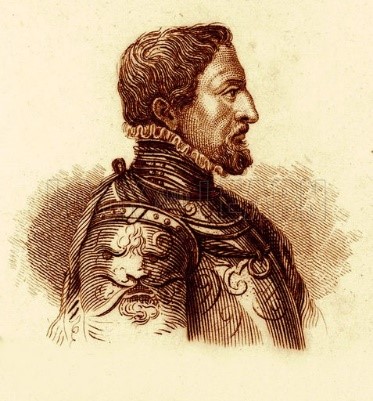
|
Earl
William Marshall
Earl William Marshall
was born 1146. Also called William the Marshal
(Guillaume le Maréchal), he was an Anglo Norman soldier
and statesman. He has been described as the "greatest
knight that ever lived.” He served five kings — Henry
the Young King, Henry II, Richard the Lionheart, John
and Henry III — and rose from obscurity to become a
regent of England and one of the most powerful men in
Europe. Before him, the hereditary title of "Lord
Marshal" designated a sort of head of household security
for the king of England; by the time he died, people
throughout Europe (not just England) referred to him
simply as "the Marshal".
In
1152, when William was probably about six years old, his
father John Marshal switched sides in the civil war
between King Stephen and Empress Matilda. According to
one chronicler, when King Stephen besieged Newbury
Castle, Stephen used the young William as a hostage to
ensure that John kept a promise to surrender the castle.
John broke his word, and when Stephen ordered John to
surrender immediately or watch as he hanged William in
front of the castle, John replied that he go ahead, for
"I still have the hammer and the anvil with which to
forge still more and better sons!" Fortunately for the
child, Stephen could not bring himself to hang young
Will. |
As a younger
son of a minor nobleman, William had no lands or fortune to
inherit, and had to make his own way in life. As a youth he was
sent to Normandy to serve in the household of William de
Tancarville, where he began his training to become a knight.
Through William de Tancarville, he then served in the household
of his mother's brother, Patrick, Earl of Salisbury. In 1168
William's uncle was killed in an ambush by Guy of Lusignan.
William was injured and captured in the same battle, but was
ransomed by Eleanor of Aquitaine, who was apparently impressed
by tales of his bravery. He had been knighted in 1167 and soon
found he could make a good living out of winning tournaments. At
that time tournaments were dangerous, often deadly, staged
battles, not the jousting contests that would come later, and
money and valuable prizes could be won by capturing and
ransoming opponents. His record is legendary: he supposedly
fought in 500 such bouts in his life and never lost once.
By 1170 his
stature had risen so far that he was appointed tutor in chivalry
for Henry the Young King, son of Henry II of England. The Young
King's relations with his father were always fractious, and
William stood by Henry during the Revolt of 1173–1174, during
which he knighted the Young King. However, in 1182 William
Marshal was accused of undue familiarity with Marguerite of
France, the Young King's wife, and was exiled from court. He
went to the court of Henry II that Christmas to ask for trial by
combat to prove his innocence, but was refused. A few months
later the Young King died, and on his deathbed he asked William
to fulfill his vow of going on a Crusade. William did so,
crusading in the Holy Land from 1183 to 1186; while there he
vowed to be buried as a Knight Templar.
Upon his
return William rejoined the court of King Henry II, and now
served the father through the many rebellions of his remaining
sons (Richard, Geoffrey, and John). In 1189, while covering the
flight of Henry II from Le Mans to Chinon, William unhorsed the
undutiful Richard in a skirmish. William could have killed the
prince but killed his horse instead, to make that point clear.
After Henry's death, he was welcomed at court by his former
adversary, now King Richard I, who was not foolish enough to
exclude a man whose legend, and power, just kept growing.
In August
1189, when he was 43, King Richard arranged for him to marry the
second-richest heiress in England, Isabel de Clare (1172-1240),
the 17-year-old daughter of Strongbow. Her father had been Earl
of Pembroke, and this title was granted to William, along with
large estates in England, Wales, Normandy and Ireland.
Isabel was
born in 1172, the eldest child of Richard de Clare, 2nd Earl of
Pembroke (1130 – 20 April 1176, known in history as Strongbow
and Aoife of Leinster, the daughter of Dermot MacMurrough, King
of Leinster and More O'Toole. The latter was a daughter of
Muitchertach O'Toole and Cacht ingen Loigsig O'Morda. The
marriage of Strongbow and Aoife took place in August 1170, the
day after the capture of Waterford by the Cambro-Norman forces
led by Strongbow, and abetted by Dermot MacMurrough.
Isabel's
paternal grandparents were Gilbert de Clare, 1st Earl of
Pembroke and Isabella de Meulan. She had a younger brother
Gilbert de Striguil, 3rd Earl of Pembroke, who died at the age
of 12. She also had an illegitimate half-sister Basile de Clare,
who married three times. Basile's husbands were: Robert de
Quincy; Raymond Fitzgerald, Constable of Leinster: Geoffrey
FitzRobert, Baron of Kells.
Isabel was
described as pleasant, gentle, and extremely attractive. After
her brother Gilbert's death in 1185, she became one of the
wealthiest heiresses in the kingdom, owning besides the titles
of Pembroke and Striguil,suo jure, much land in Wales and
Ireland. She inherited the numerous castles on the inlet of
Milford Haven, guarding the South Channel, including Pembroke
Castle. She was a ward of King Henry II.
The marriage
was happy, despite the vast difference in age between them. The
marriage transformed the landless knight from a minor family
into one of the richest men in the kingdom, a sign of his power
and prestige at court. William made numerous improvements to his
wife's lands, including extensive additions to Pembroke Castle
and Chepstow Castle.
William was
included in the council of regency which the King appointed on
his departure for the Third Crusade in 1190. He took the side of
Prince John when the latter expelled the justiciar, William
Longchamp, from the kingdom, but he soon discovered that the
interests of John were different from those of Richard. Hence in
1193 he joined with the loyalists in making war upon the prince.
Richard forgave Marshal his first error of judgement, and
allowed him to succeed his brother, John Marshal, in the
hereditary marshalship, and on his death-bed designated him as
custodian of Rouen and of the royal treasure during the
interregnum.
William
supported King John when he became king in 1199, but they had a
falling out when William paid homage to King Philip II of France
for his Norman lands. William left for Leinster in 1207 and
stayed in Ireland until 1212, during which time he had Carlow
Castle erected. In 1212 he was summoned to fight in the Welsh
wars. Despite these differences, it was William on 15 June 1215
at Runnymede who dealt with the barons who made King John agree
to the Magna Carta, and he was one of the few English noblemen
to remain loyal to the royal side through the First Barons' War.
It was William whom King John trusted on his deathbed to make
sure John's nine-year-old son Henry would get the throne.
On 11
November 1216, upon the death of King John, William Marshal was
named by the king's council (the chief barons who had remained
loyal to King John in the First Barons' War) to serve as both
regent of the 9 year old King Henry III, and regent of the
kingdom. In spite of his advanced age (around 70) he prosecuted
the war against Prince Louis and the rebel barons with
remarkable energy. In the battle of Lincoln he charged and
fought at the head of the young
King's army,
leading them to victory. He was preparing to besiege Louis in
London when the war was terminated by the naval victory of
Hubert de Burgh in the straits of Dover. He was criticized for
the generosity of the terms he accorded to Louis and the rebels
in September 1217; but his desire for an expeditious settlement
was dictated by sound statesmanship. Self-restraint and
compromise were the key-notes of Marshals policy, hoping to
secure peace and stability for his young liege. Both before and
after the peace of 1217 he reissued Magna Carta, in which he is
a signatory as one of the witnessing barons. Without his
presence England might not have survived the disastrous reign of
John; where the French and the rebels would not trust the
English king's word, they would trust William.
William
Marshal's health finally failed him in February 1219. In March
1219 he realized that he was dying, so he summoned his eldest
son, also William, and his household knights, and left the Tower
of London for his estate at Caversham in Oxfordshire, near
Reading, where he called a meeting of the barons, Henry III, the
papal legate, the royal justiciar (Hubert de Burgh), and Peter
des Roches (Bishop of Winchester and the young King's guardian).
William rejected the Bishop's claim to the regency and entrusted
the regency to the care of the papal legate; he apparently did
not trust the Bishop or any of the other magnates that he had
gathered to this meeting. Fulfilling the vow he had made while
on crusade, he was invested into the order of the Knights
Templar on his deathbed. He died on 14 May 1219 at Caversham,
and was buried in the Temple Church in London, where his effigy
can still be seen.
William
Marshal appears in two romance novels by Marsha Canham: In the
Shadow of Midnight and The Last Arrow. William appears (named
only as the Earl of Pembroke) in William Shakespeare's
historical play King John and is a central character in
the traditional English ballad "Queen Elanor's Confession"
(Child 156), in which he is (fictitiously) revealed to have
seduced Eleanor of Aquitaine while escorting her to England.
Four generations of the Marshal family, from Isabel de Clare's
parents through William fitzWilliam's fictitious bastard son,
are the subjects of a series of four historical romances by Mary
Pershall. Dawn of the White Rose (1985) is the one about
William Marshal and Isabel de Clare. William Marshal appears in
four of the books authored by Jean Plaidy on the Plantagenet
Kings: The Revolt of the Eaglets (where he fights for
Henry II), The Heart of the Lion (his relation with
Richard Coeur de Lion), The Black Prince (his relation
with King John Lackland) and The War of the Queens (in
his role as regent of Henry III). His daughter Isabella also
appears in the next book of the Saga, The Queen from Provence,
as Richard of Cornwall's first wife…and numerous more cultural
references.
The Office
of Marshal, now Earl-Marshal still exists, and still holds
responsibility for Royal Funerals. The present Earl Marshal is
the Duke of Norfolk.
You can see
his great castles such as Carlow Castle in Ireland, and Pembroke
Castle with its great tower and Chepstow Castle in Wales.
Temple Church - London
Temple Church in the City of London located between Fleet Street
and the River Thames, was built by the Knights Templar as their
English headquarters. In the mid-12th century, before the
construction of the church, the Knights Templar in London had
met at a site in High Holborn in a structure originally
established by Hugues de Payens (the site had been historically
the location of a Roman temple in Londinium, now known as
London).
Because of the rapid growth of the Order, by the 1160s the site
had become too confined, and the Order purchased the current
site for the establishment of a larger monastic complex as their
headquarters in England. King Henry II, gifted land close to the
River Thames to the Order of the Knights Templar.
After the capture of Jerusalem in 1099 by the Crusaders, the
Dome of the Rock was given to the Augustinians, who turned it
into a church (while the Al-Aqsa Mosque became a royal palace).
Because the Dome of the Rock was the site of the Temple of
Solomon, the Knights Templar set up their headquarters in the
Al-Aqsa Mosque adjacent to the Dome for much of the 12th
century. The Templum Domini, as they called the Dome of
the Rock, along with the Church of the Holy Sepulchre upon which
it was based soon became the architectural model for Round
Templar churches across Europe. In a twist of fate, that church
may originally have been a temple to Aphrodite in the second
century.
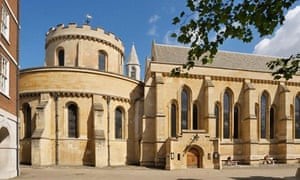
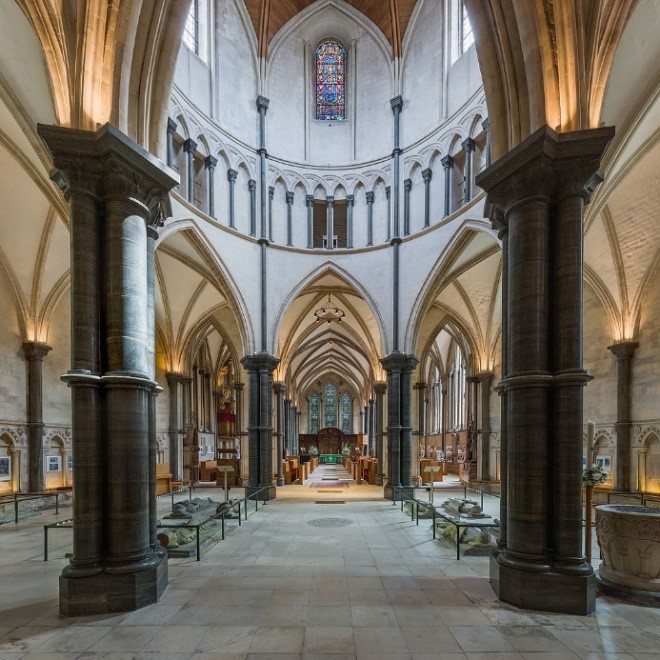 |
The
church building comprises two separate sections: The
original circular church building, called the Round
Church and now acting as a nave, and a later rectangular
section adjoining on the east side, built approximately
half a century later, forming the chancel. The Round
Church is 55 feet in diameter, and contains within it a
circle of the earliest known surviving free-standing
Purbeck Marble columns. It is probable that the walls
and grotesque heads were originally painted in colors.
Work
on the London headquarters of the Knights Templar began
in the 1160s. It was consecrated at Candlemas in honor
of the Blessed Virgin Mary on February 10, 1185 by
Heraclius, Latin Patriarch of Jerusalem - later
re-dedicated in 1240 when the new chancel was built. It
is believed that King Henry II (1154–1189) was present
at the consecration.
The
church was originally part of a large monastic compound
that included residences, military training facilities,
and recreational grounds for the military brethren and
novices, who were not permitted to go into the city
without the permission of the Master of the Temple.
The
original church had a small choir, but this was greatly
enlarged in the early 1200s when King Henry III
expressed a wish to be buried there. The new chancel was
consecrated on Ascension Day 1240. However, when Henry's
will was read upon his death in 1272, it was discovered
he had changed his mind and wanted to be buried in
Westminster Abbey instead.
The
Knights Templar order was very powerful in England, with
the Master of the Temple sitting in parliament as
primus baro (the first baron in precedence of the
realm). The compound was regularly used as a residence
by kings and by legates of the pope. The Temple also
served as an early safety-deposit bank, sometimes in
defiance of the Crown's attempts to seize the funds of
nobles who had entrusted their wealth there. |
After the destruction and abolition of the Knights Templar in
1307, King Edward II took control of the church as a Crown
possession. It was later given to the Knights Hospitaller, who
leased the Temple to two colleges of lawyers. One college moved
into the part of the Temple previously used by the Knights, and
the other into the part previously used by its clergy, and both
shared the use of the church. The colleges evolved into the
Inner Temple and the Middle Temple, two of the four London Inns
of Court.
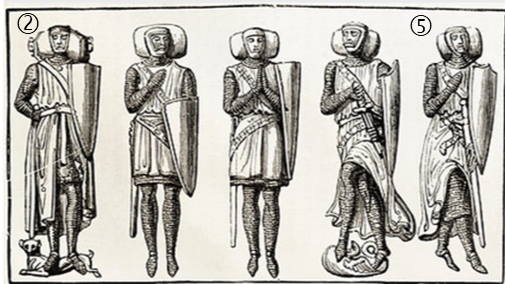
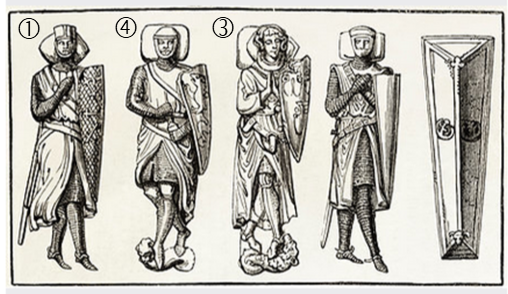 |
One of the most interesting aspects inside the Temple
Church are the nine life-sized marble knightly effigies
that lie in the old round church. A tenth sarcophagus
has a carved lid. These were believed to be tombs until
the post-WWII restoration revealed no bodies, but only
effigy memorials.
All the knights are on their back, with their eyes open,
around the age of 30, but are otherwise positioned in
different ways: some have their legs extended straight
out while others have their legs crossed; some wear
tunics over their armor and others wear full-length
robes; some clutch their swords, some pray, and some
have their arms straight at their sides.
Of the nine Knight effigies, five have been identified:
-
Geoffrey de Mandeville, 1st Earl of Essex
-
William Marshall, 1st Earl of Pembroke
-
Robert de Roos, 4th Baron of Hamlake
-
William Marshall, 2nd Earl of Pembroke
-
Gilbert Marshall, 4th Earl of Pembroke
|
Sir
Hugh de Morwick, III
Sir Hugh De Morwick
was born ca.
1224 in Morwick, Northumberland. Morwick, or Morrick, is a
township in Warkworth parish, Northumberland, on the River
Coquet, near the coast, 2 miles Southwest of Warkworth.
Warkworth is a place of
great antiquity, and during the heptarchy was of considerable
importance: a church was founded there in 736, by Ceolwulph,
King of Northumbria, who is supposed to have granted the monks
of
Lindisfarne
Priory a charter
of incorporation, under the provisions of which the town still
retains the privileges of a borough by prescription. In 1174,
William the Lion, King of Scotland, taking up his headquarters
there, sent Earl Duncan, who commanded his army, to lay waste
the adjacent country; and on the same day that William was
defeated and taken prisoner at Alnwick, the earl, entering the
town of Warkworth with his soldiers, set fire to it, and
massacred the inhabitants without distinction of age or sex.
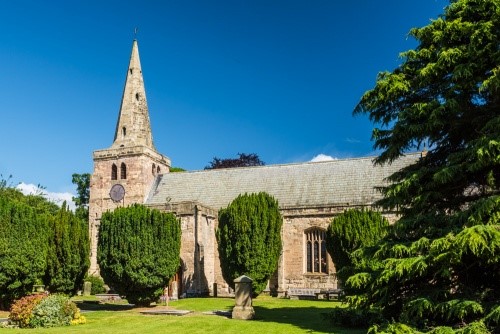
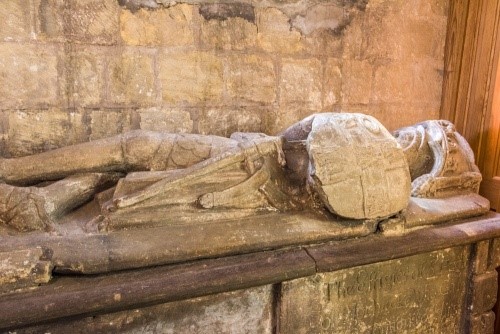 |
The 8th-century timber
church was probably destroyed in the Viking raids that
damaged Lindisfarne itself in the 9th century. The
timber church was rebuilt in stone, but no trace of that
first stone church remains. We do know that its altar
stood beneath the present chancel arch.
It was replaced by the present stone building in 1132,
around the same time as
Warkworth Castle
was begun on the hill above. The church was
intended not only as a place of worship but as a place
of refuge in times of war. The nave is narrow and high,
with extremely thick walls and slit windows, reminiscent
of military construction.
Near the south door is a medieval knight's effigy
resting on a 17th-century table tomb. The effigy shows
the knight in a traditional cross-legged pose with his
feet resting on a carved lion. The inscription indicates
that this is Sir Hugh de Marwick, English Crusader and
Templar. |
 |